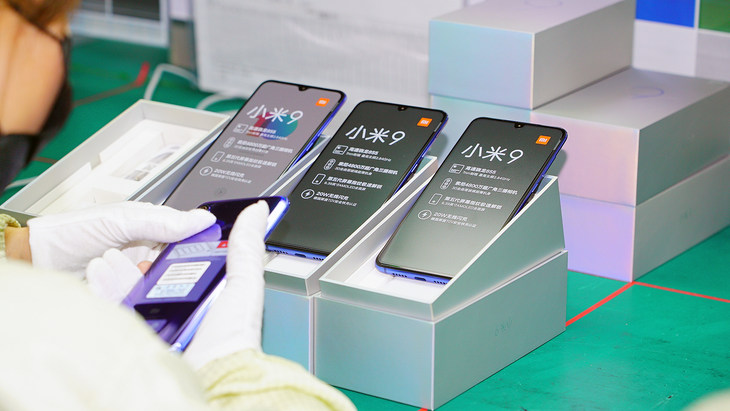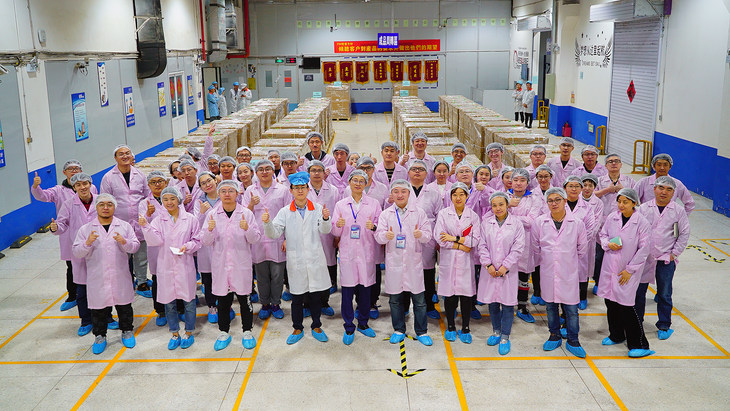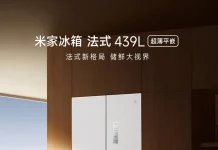Xiaomi recently invited some media personnel to a tour of Foxconn’s Langfang factory which is one of the three factories where the flagship Mi 9 series is produced. The three factories are Foxconn’s Langfang factory, Yinghuada’s factory at Nanjing, and BYD’s Xi’an factory. As you must have known, the Mi 9 has been experiencing some shortage in stock, occasioned by surging demand and from the look of things, a cumbersome production process. 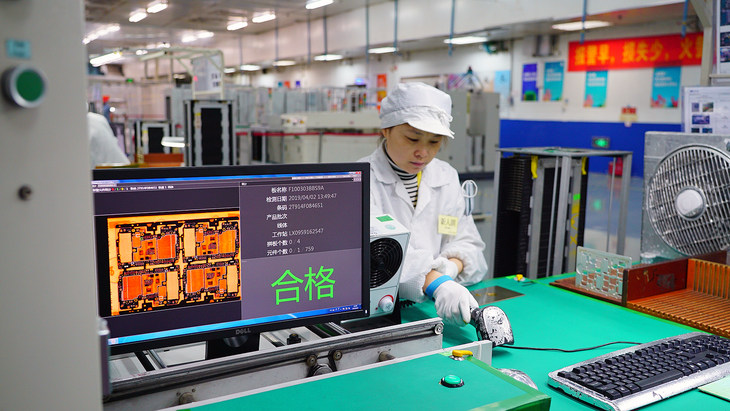
The Mi 9 production is not just difficult because of the material it uses, but because it has to undergo several tests to assure of its durability. Most of the Mi 9 units in circulation are produced at Foxconn’s Langfang factory so this tour is a clear demonstration of the process. According to PCpop, the tour took reports to the SMT production line where the motherboard for the phone is processed.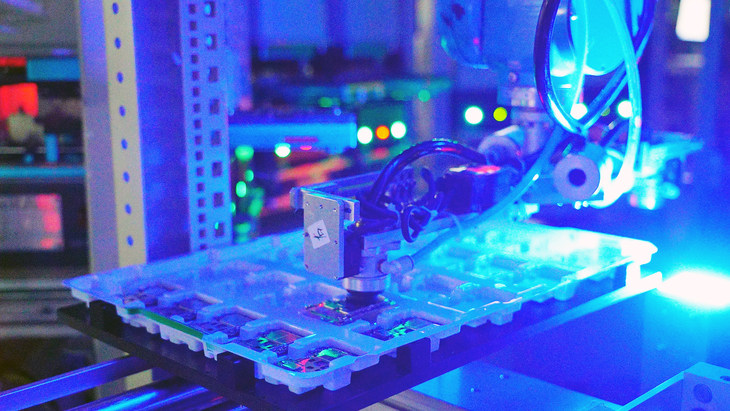
There, the components are soldered on to the PCB main board. This is an automated process that is carried out by robots. The phone’s chipset, resistors and capacitors are placed on the main board by the robot according to the specified coordinates, and then it goes through the reflow oven where the entire motherboard is processed. The workers are mainly there to monitor the process and add raw materials. This process is very fast and accurate. One of the production lines can produce 8000 mobile phone motherboards a day and there are 10 of such SMT production lines at Langfang Foxconn.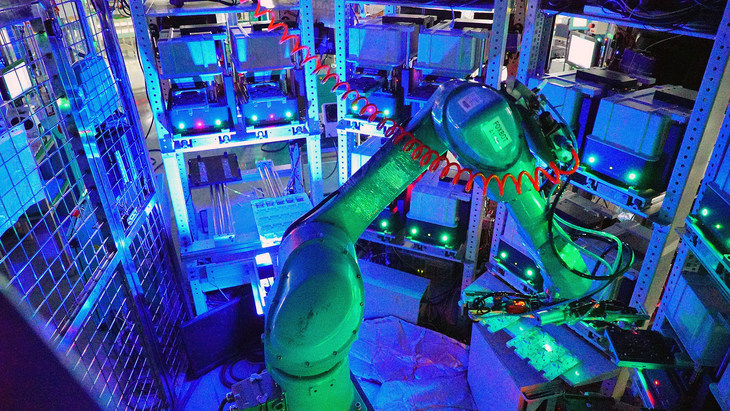
The tour also took the reporters to the assembly workshop where the motherboard, screen, camera, earpiece, battery, wireless charging coil and other components of the Mi 9 is assembled to the frame. The process is constantly monitored with each unit checked to ensure the assembled components are working. After that, the glass back panel is mounted. It is also precisely positioned by a precision robot, and the back cover is tightly fitted to the body. Then the model name is printed on the rear shell. After that, the production is completed.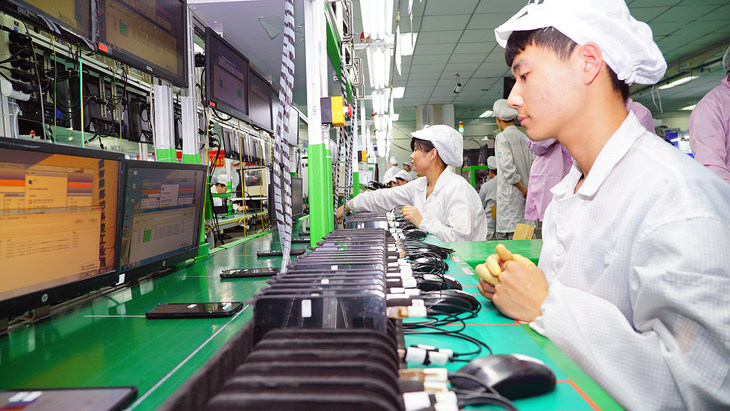
After the complete production, the phone isn’t shipped out just yet but still has to undergo several rigorous stress tests. In the ageing test workshop, the assembled mobile phone will simulate the heavy use of the user, and test whether there are software and hardware issues on the mobile phone. After that, the mobile phone will be processed by p2i, which is to cover the surface of the mobile phone with the P2i nano-coating so that the surface of the mobile phone is hydrophobic, and the liquid can be prevented from entering the mobile phone, thereby achieving a ti-splash level. The entire p2i process lasts for 3 hours.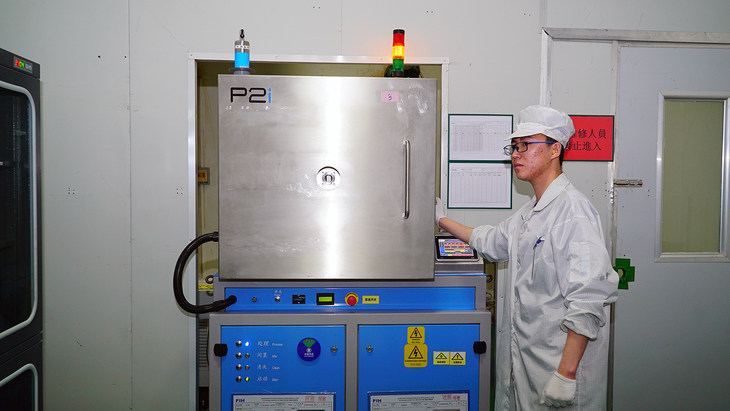
The last production line is where the Mi 9 is packaged. Before packaging, another test is carried out on some of the features such as the screen and camera before the packaging of the mobile phone. Then the network license is placed on the back of the fuselage, as well as a barcode on the back and a protective film on the screen. The phone is then placed inside the packaging box alongside other accessories before sending it to a temporary storage facility. According to the officer in charge of the factory, the sales of the Mi 9 is very hot so, the phone doesn’t even make it to the warehouse before it is shipped to the various sales channels.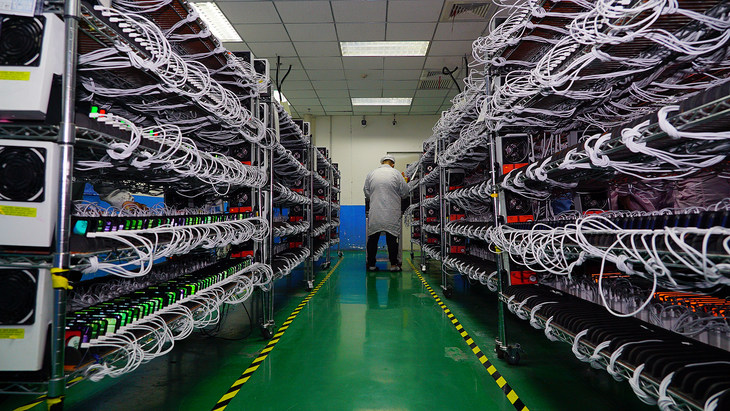
Read Also: Xiaomi launches a Star Trang Telescope priced at 599 yuan ($89)
After the factory tour, Qiao Tonghu, senior manager of mobile phone delivery management in the production management department of Xiaomi Group’s mobile phone department, and Xu Jieyun, general manager of Xiaomi Group’s public relations department, accepted questions from the media. Most of the questions centered on the production capacity of the Mi 9. The Xiaomi official in charge noted that the company first encountered problems in the early production stages in two aspects. First, the supply of camera modules was relatively small, which limits the overall production capacity. Then the aspect of worker’s proficiency but that is constantly improving.
(source)